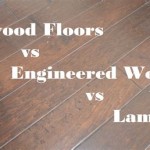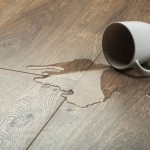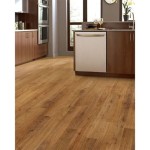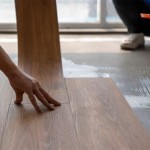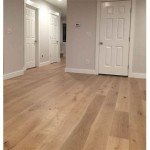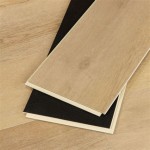Laminate Flooring And Vinyl: What You Should Know
Laminate flooring and vinyl flooring are two of the most popular choices for homeowners and businesses looking for cost-effective, durable, and aesthetically pleasing flooring solutions. Both materials offer distinct advantages and disadvantages, making the selection process dependent on specific needs, budget considerations, and desired aesthetic outcomes. Understanding the nuances of each flooring type is crucial for making an informed decision that will provide long-lasting satisfaction.
This article provides a comprehensive overview of laminate and vinyl flooring, exploring their composition, installation processes, durability, maintenance requirements, and aesthetic versatility. By examining these key aspects, individuals can gain a thorough understanding of each flooring option and determine which best aligns with their specific requirements.
Understanding Laminate Flooring
Laminate flooring is a multi-layer synthetic flooring product fused together through a lamination process. It simulates the appearance of hardwood, stone, or tile, offering a realistic visual appeal at a more affordable price point. The construction of laminate flooring typically consists of four layers:
1. Wear Layer: This is the top layer and provides resistance to scratches, stains, and fading. It is a transparent, durable coating that protects the decorative layer beneath.
2. Decorative Layer: This layer features a high-resolution photographic image that replicates the desired aesthetic, such as wood grain, stone patterns, or tile designs. The quality of this layer significantly influences the realism of the laminate flooring.
3. Core Board: The core board is the thickest layer and provides structural stability and impact resistance. It is typically made from high-density fiberboard (HDF) or medium-density fiberboard (MDF). HDF offers superior durability and moisture resistance compared to MDF.
4. Backing Layer: This bottom layer provides balance and helps to prevent moisture from penetrating the core board. It also adds stability to the planks and reduces noise transmission.
Laminate flooring is generally installed as a floating floor, meaning it is not directly glued or nailed to the subfloor. Instead, the planks or tiles interlock using a tongue-and-groove system, creating a seamless and stable surface. This installation method simplifies the process and reduces installation costs.
The durability of laminate flooring is determined by its Abrasion Class (AC) rating. The AC rating indicates the floor's resistance to wear and tear, with higher AC ratings indicating greater durability. AC ratings range from AC1 to AC5, with AC3 or AC4 being suitable for residential use and AC5 being ideal for high-traffic commercial environments.
Exploring Vinyl Flooring
Vinyl flooring is a resilient flooring option made from synthetic materials, primarily polyvinyl chloride (PVC). It is known for its durability, water resistance, and versatility in design. Vinyl flooring comes in various forms, including sheet vinyl, vinyl tile, and luxury vinyl plank (LVP) or luxury vinyl tile (LVT).
Sheet vinyl is a large, continuous sheet of vinyl that is typically installed over a prepared subfloor. It offers excellent water resistance and is ideal for bathrooms, kitchens, and laundry rooms. Vinyl tiles are individual squares of vinyl that can be installed in various patterns and designs. LVP and LVT are designed to mimic the appearance of hardwood or stone, offering a realistic aesthetic with enhanced durability and water resistance.
The construction of vinyl flooring typically consists of several layers:
1. Wear Layer: Similar to laminate flooring, the wear layer is the top layer that protects the flooring from scratches, stains, and wear. The thickness of the wear layer is a critical factor in determining the durability of the vinyl flooring. Thicker wear layers provide greater protection and are more suitable for high-traffic areas.
2. Print Layer: This layer contains the printed design or pattern that replicates the desired aesthetic, such as wood grain, stone patterns, or tile designs. High-quality printing techniques are used to create realistic and visually appealing designs.
3. Core Layer: The core layer provides structural stability and impact resistance. It can be made from various materials, including solid vinyl, fiberglass, or composite materials. The composition of the core layer influences the overall durability and rigidity of the vinyl flooring.
4. Backing Layer: This bottom layer provides cushioning and helps to improve the flooring's sound absorption properties. It also provides a stable base for installation.
Vinyl flooring can be installed using various methods, including glue-down, click-lock, and loose-lay. Glue-down installation involves adhering the vinyl flooring directly to the subfloor using adhesive. Click-lock installation uses a tongue-and-groove system similar to laminate flooring, allowing the planks or tiles to interlock. Loose-lay vinyl flooring is designed to be installed without adhesive, relying on its weight and friction to stay in place.
Key Differences and Considerations
While both laminate and vinyl flooring offer benefits, several key differences should be considered when making a decision:
1. Water Resistance: Vinyl flooring is inherently water-resistant, making it an excellent choice for areas prone to moisture, such as bathrooms, kitchens, and basements. Laminate flooring, while often treated with water-resistant coatings, is generally less resistant to water damage. Prolonged exposure to moisture can cause the core board of laminate flooring to swell and warp.
2. Durability: Both laminate and vinyl flooring are durable, but their resistance to wear and tear can vary depending on the quality and thickness of the wear layer. High-quality laminate flooring with a high AC rating and vinyl flooring with a thick wear layer can withstand heavy foot traffic and resist scratches and stains.
3. Installation: Both laminate and vinyl flooring can be installed as floating floors using click-lock systems, simplifying the installation process. However, vinyl flooring also offers glue-down and loose-lay installation options, providing greater flexibility in installation methods.
4. Comfort: Vinyl flooring tends to be more comfortable underfoot than laminate flooring due to its inherent resilience. Vinyl flooring can also be installed with an underlayment to further enhance its comfort and sound absorption properties.
5. Cost: Laminate flooring and vinyl flooring are generally more affordable than hardwood or tile flooring. However, the cost can vary depending on the quality, thickness, and brand of the flooring. Generally, laminate flooring can be slightly cheaper to install than top-quality vinyl flooring since LVP often require more intricate installation methods.
6. Maintenance: Both laminate and vinyl flooring are relatively easy to maintain. Regular sweeping or vacuuming is sufficient to remove dirt and debris. Spills should be cleaned up promptly to prevent staining. Mild detergents can be used to clean both types of flooring, but harsh chemicals should be avoided.
7. Appearance and Design: Both laminate and vinyl flooring offer a wide range of designs and styles to suit various aesthetic preferences. High-resolution printing techniques are used to create realistic wood grain, stone patterns, and tile designs. LVP and LVT often feature embossed textures that further enhance the realistic appearance of the flooring.
Choosing between laminate and vinyl flooring requires careful consideration of various factors, including budget, durability requirements, aesthetic preferences, and the specific needs of the space. By understanding the key differences and considerations outlined above, individuals can make an informed decision that will result in a flooring solution that meets their needs and provides long-lasting satisfaction.

Korlok Select Weathered Barnwood Rkp8211

8211 Hoak Bubinga Wood 8 Ft X 4 Horizontal Oak Finish Decorative Laminate 1 Mm Axilam Brown Laminates For Living Room Bedroom Office Material Depot

Laminate Flooring

Mannington Restoration Wide Hillside Hickory Stone 28211 Laminate Flooring

Mannington Restoration Wide Hillside Hickory Stone 28211 Laminate Flooring

Laminate Floor Checklist Colorado Springs Castle Rock Pueblo Co Hardwood Flooring Specialist

Lvt Vs Laminate Flooring What S Best For Your Project Checkatrade

Vinyl Flooring Courtice Whitby Oshawa Premium Floors

Mannington Restoration Collection Wide Plank Hillside Hickory Stone Rst8 28211

Natural Impact Dark Walnut D R Flooring
Related Posts


